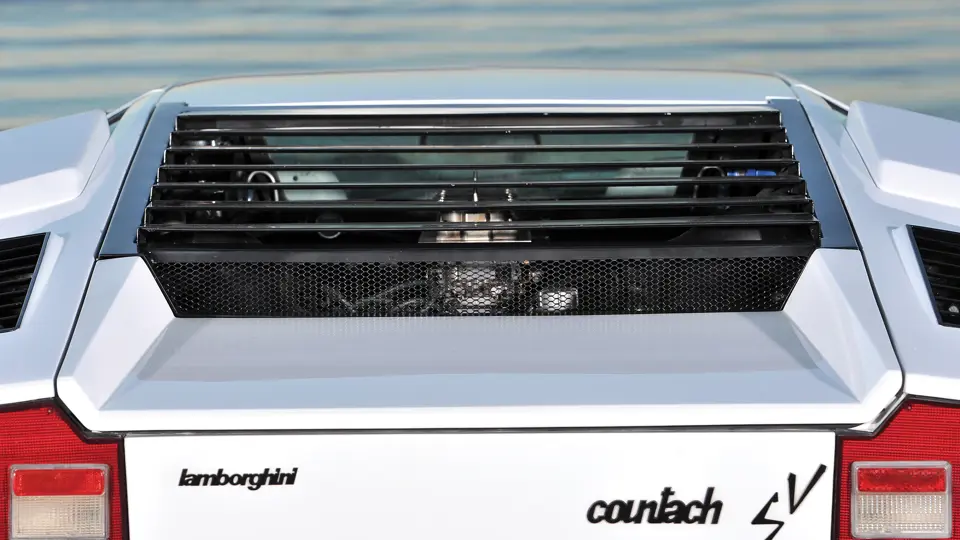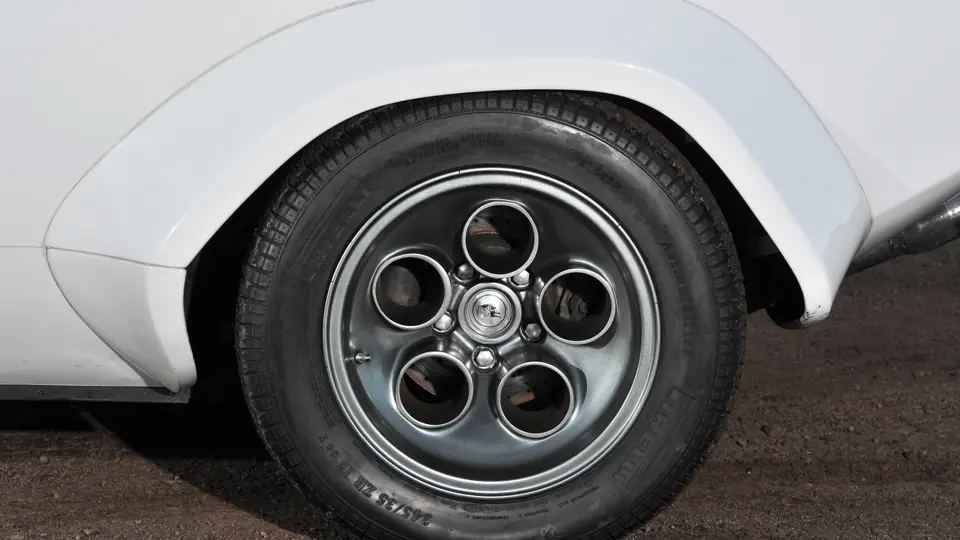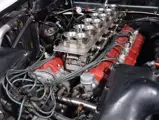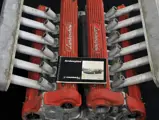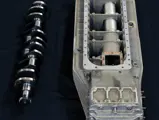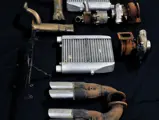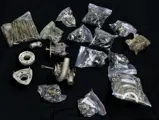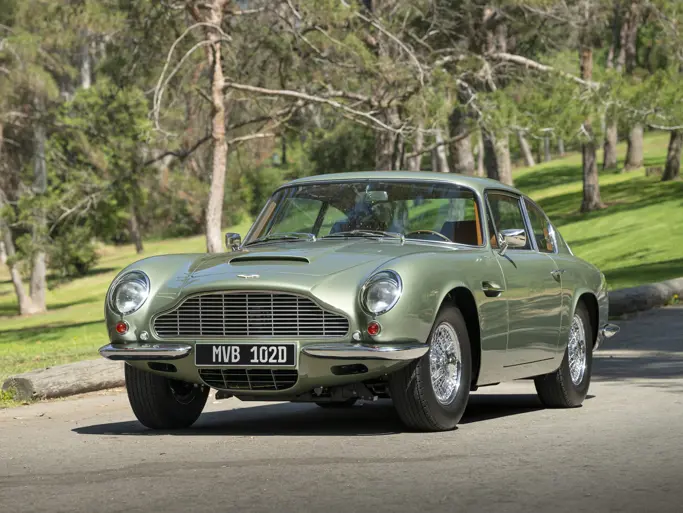
1980 Lamborghini Countach LP400 S
{{lr.item.text}}
€392,000 EUR | Sold
{{bidding.lot.reserveStatusFormatted}}
- One of 105 Countach LP400S Series II examples built
- One of three Countaches upgraded by Bob Wallace with twin turbochargers in period
- Includes original matching-numbers engine
- Serviced and fitted with a new interior by Gary Bobileff
- Une des 105 Countach LP400 S Série II construites
- Une des trois Countach modifiées à l’époque par Bob Wallace avec deux turbos
- Numéros de moteur concordants (matching numbers) et d’origine
- Entretenue et pourvue d’un intérieur neuf par Gary Bobileff
375 bhp, 3,929 cc DOHC V-12 engine with six twin-throat Weber carburettors, five-speed manual transmission, unequal length A-arm front suspension with coil springs and an anti-roll bar, upper lateral-link rear suspension with lower A-arms, coil springs, and an anti-roll bar, and four-wheel disc brakes. Wheelbase: 2,450 mm.
Moteur V-12 à 2 ACT par banc, 3 929 cm3, 375 ch, six carburateurs Weber double corps, boîte de vitesses manuelles à cinq rapports, suspension avant par triangles inégaux superposés, ressorts hélicoïdaux et barre antiroulis, suspension arrière par bras latéraux supérieurs et triangles inférieurs, ressorts hélicoïdaux et barre antiroulis ; quatre freins à disque. Empattement: 2 450 mm
The second iteration of Lamborghini’s iconic Countach was the LP400S, and it was unveiled at the Geneva Salon in 1974, just four years after the original premiered at the same show. Even though the public had become accustomed to Marcello Gandini’s wild and outlandish design, the LP400S was just as exciting to behold on the stand at Geneva as the original prototype and its first road going predecessor. Almost at the moment the car was announced, numerous existing and new Lamborghini customers expressed their interest in the newest car, seeking to have the latest and greatest example of the wildest road-legal car available for sale.
The LP400S, keeping all the flair and personality that made the original Countach so exciting, sought to not change what worked but rather introduce improvements that would make the car a better platform overall. The most apparent change to the car was that it was fitted with even wider Pirelli tyres, which helped to put the car’s 375 horsepower to the ground. In order to accept these tyres, the Countach required further modifications, including a completely revised suspension geometry to account for the change in tyre width and wheel size. The bodywork was also fitted with muscular yet subtle flares to house said wheels and tyres. The LP400S obviously resonated with Lamborghini’s clientele, as many LP400 customers requested that dealers or the factory make LP400S-esque updates available to their cars to keep them as current and up to date as possible. Performance still remained on-par with the car’s stellar looks, and the LP400S had a top speed quoted at 179.8 mph.
Today, the 237 production examples of the Countach LP400S are easily divisible into three distinct series, which are based on different modifications and upgrades added to the car throughout the production run. The Series II cars, of which 105 were produced, are most easily identified by their smooth-finished concave wheels, and they also retain the low-body suspension setting of the Series I cars.
The Countach offered here boasts a story almost more interesting than the car itself. Chassis number 1121254, a 1980 LP400S Series II, was originally delivered to John Robertson, of Kalispell, Montana, in the United States, and at that time, it was finished in white with a black interior. Robertson was known for extensively modifying his cars to increase their performance, as he was a man with an unquenchable need for speed, and his Countach would share garage space with a highly modified Ferrari 365 GTB/4 Daytona. Robertson’s new Countach would be no exception to this rule, and it would receive a plethora of upgrades to make it arguably one of the fastest street-legal automobiles on the road.
Upon taking delivery of the Countach, Robertson immediately had the car shipped to ex-Lamborghini engineer and test-driver Bob Wallace. He was an individual who was intimately familiar with extracting all possible performance out of the cars from Sant’Agata and was even credited as the man behind such incredible Lamborghinis as the Miura Jota and the Jarama "Bob". Whilst Ferruccio Lamborghini never fully appreciated Wallace’s desire to go racing, many of Lamborghini’s customers did, and after departing Lamborghini in 1975, he opened up his own shop.
At the time, Wallace was located in Phoenix, Arizona, and Robertson commissioned him to fit the car’s 4.0-litre V-12 with twin turbochargers, as well as upgrade the brakes to ensure its increased performance could be reeled in as fast as it could be unleashed. The body was also modified by fitting additional vents to the engine cover, which would assist with keeping the engine bay cool with all of the extra power. The car is photographed at Wallace’s facilities in Pete Lyon’s The Complete Book of Lamborghini, and it is noted as being one of three cars upgraded by Wallace with turbochargers. Even though his new car had been updated to produce massive amounts of power, this still did not quench Robertson’s thirst for power and uncompromised performance. The owner further increased the boost on his turbochargers, resulting in the engine continuing to blow its head-gaskets. This matching-numbers engine is included in the sale and is believed to be serviceable.
The car was returned to Wallace for an engine rebuild, at which point he decided that the performance Robertson sought could be achieved through different means than turbochargers. At this time, the Countach Quattrovavle had been introduced, and Wallace thought that their powerplant would be suitable for many upgrades. After sourcing an engine from an LM002, Wallace removed the stroker plates, bored the engine, and fitted custom cranks and camshafts. A triple-disk clutch was installed to improve shifting, as were upgraded brakes, a custom intake manifold, a custom exhaust, a MSD ignition, and a complete fire control system, creating what would have undoubtedly been the ultimate Countach in anyone’s opinion. Pleased with the results, the Countach returned to Montana with Robertson, where it would remain until 2005.
After the car was sold from Robertson’s estate following his passing, the Countach moved further north to David Kean, of Calgary, Alberta, Canada. At that time, Kean sent the car to noted Lamborghini specialist Gary Bobileff, who installed a new white interior and completed other minor service work, which included overhauling the carburettors, installing electric side-view mirrors, replacing the ignition coils, and fitting new rubber around the windshield. After departing from Kean’s ownership shortly thereafter, the Countach was shipped to Europe, where it resides today. It’s important to note that the car is offered with a large complement of parts, most notably its original V-12 engine, which has a set of turbochargers and intercoolers from Robertson’s ownership.
With early Countach models gaining steam in the collector car market, the LP400S has become extremely desirable to collectors. These cars retained all the characteristic charm of the earliest Periscopo models whilst also introducing a few subtle updates, and they have proven to be just as exciting to drive as they are to look at. This particular Countach is no exception.
This car boasts a fascinating early history that involves one of the most important men in the history of Lamborghini, and it would be an exciting acquisition for the individual looking for a Countach that stands out from the rest.
La deuxième itération de l’emblématique Countach de Lamborghini, la LP400 S fut dévoilée au salon de Genève de 1974, quatre ans après seulement le lancement de l’original au même endroit. Même si le public s’était habitué au dessin étrange et percutant de Marcello Gandini, la LP400 S fut tout aussi excitante à contempler sur le stand du salon que le prototype original et la première routière précédente. Presque au moment de l’annonce de cette voiture, de nombreux clients anciens et nouveaux de Lamborghini exprimèrent leur intérêt envers la nouvelle voiture en essayant d’obtenir sans tarder la version la plus récente et la plus prestigieuse de la plus sauvage des voitures de route disponibles sur le marché.
Toujours dotée du caractère et de la personnalité qui avaient rendu la Countach si excitante, la LP400 S ne cherchait pas à changer ce qui avait fonctionné, mais introduisait des améliorations qui devaient faire globalement de la voiture une machine plus efficace. Le changement le plus apparent sur la voiture concernait le montage de pneus Pirelli encore plus larges capables de passer à la route les 375 ch de la machine. Pour pouvoir adopter des pneus de cette taille, la Countach avaient demandé d’autres modifications dont une géométrie de suspension totalement révisée en fonction de la nouvelle dimension des roues et des pneus. La carrosserie reçut aussi des carénages musculeux, mais subtils, pour loger ces nouveaux équipements. Vibrant en phase avec la clientèle de Lamborghini, de nombreux possesseurs de LP400 demandèrent que les concessionnaires ou l’usine portassent leur voiture aux spécifications LP400 S afin de les maintenir à niveau, sinon à l’avant-garde. Les performances demeuraient à la hauteur de l’aspect intersidéral de la voiture et la LP400 S atteignait en pointe près de 290 km/h.
Aujourd’hui, les 237 exemplaires de série de la Countach LP400 S sont aisément divisibles en trois séries distinctes sur la base des différentes modifications et améliorations introduites sur la voiture tout au long de sa période de production. Les voitures de la série II, produites à 105 exemplaires, sont facilement identifiables par leurs roues concaves très lisses et l’assiette surbaissée des voitures de la série I.
La Countach offerte ici possède un historique presque plus intéressant que celui du modèle lui-même. La châssis n° 1121254, une LP400 S Série II de 1980, fut initialement livrée à John Robertson de Kalispell, Montana, USA, peinte en blanc avec intérieur noir. Personnage connu pour sa soif de vitesse inextinguible, il était aussi célèbre pour procéder à de profondes modifications de ses voitures en vue d’améliorer leurs performances. Sa Countach devait partager son garage avec une Ferrari 365 GTB/4 Daytona très modifiée. La nouvelle Countach de Robertson n’allait pas faire exception à cette règle et recevrait une bordée d’améliorations destinées à en faire une des plus rapides voitures street legal sur la route.
Dès la livraison de la Countach, Robertson fit immédiatement expédier la voiture chez l’ancien ingénieur et pilote essayeur de Lamborghini, Bob Wallace. Personnage intimement associé à toutes les tentatives d’extraction de performances maximales sur les voitures de Sant’Agata, Wallace fut crédité de la création de ces incroyables Lamborghini que furent la Miura Jota et la Jarama « Bob ». Si Ferruccio Lamborghini ne céda jamais à son envie de s’engager en compétition, de nombreux clients de Lamborghini le firent et, après son départ de chez Lamborghini en 1975, il ouvrit son propre atelier de préparation.
À l’époque, Wallace était installé à Phoenix, Arizona, et Robertson chargea Wallace d’installer sur la voiture un moteur V-12 de 4 litres nourri par deux turbocompresseurs ainsi que d’améliorer les freins pour que le supplément de performance puisse être contrôlé aussi vite qu’il était déchaîné. La carrosserie fut aussi modifiée de façon à installer des prises d ‘air supplémentaires sur le capot afin de limiter l’élévation de température dans le compartiment moteur malgré le surcroît de puissance. La voiture, photographiée chez Wallace dans l’ouvrage de Pete Lyons, The Complete Book of Lamborghini, est indiquée comme étant une des trois voitures dotées par Wallace de turbocompresseurs. Malgré l’énorme puissance conférée à sa nouvelle voiture, la soif de Robertson pour les chevaux et les performances ne fut pas éteinte pour autant. Le propriétaire augmenta régulièrement la pression d’admission fournie par les turbos et le moteur continua de claquer tout aussi régulièrement ses joints de culasse. Ce moteur à numéros concordants qui fait partie du lot est estimé réparable.
La voiture revint chez Wallace pour une reconstruction du moteur et, à ce stade, Wallace estima que les performances voulues par Robertson pouvaient êre obtenues par d’autres moyens que la suralimentation par turbos. À cette époque, la Countach Quattrovalvole avait été introduite et Wallace pensa que le groupe était susceptibles de supporter de nouvelles améliorations. Après avoir obtenu le moteur d’un LM002, Wallace démonta les semelles d’épaisseur et réalésa le moteur avant d’y installer un vilebrequin et des arbres à cames « sur mesures ». Un embrayage à trois disques fut installé pour faciliter la sélection, puis des freins renforcés, une tubulure d’admission améliorée, un échappement spécial, un allumage MSD et un système complet d’extincteur pour la touche finale, créant ainsi ce qui pouvait passer comme l’ultime Countach aux yeux de l’opinion. Ravi du résultat, Robertson ramena la Countach au Montana où elle demeura jusqu’en 2005.
Après la vente de la Countach, consécutive au décès de Robertson, par les héritiers, la voiture monta vers le nord chez David Kean de Calgary, dans l’Alberta au Canada. À cette époque, Kean envoya la voiture au réputé spécialiste Lamborghini Gary Bobileff qui lui offrit un intérieur blanc tout neuf et effectua quelques mises au point dont la révision des carburateurs, la pose de rétroviseurs extérieurs électriques, le remplacement des bobines d’allumage et du joint caoutchouc du pare-brise. Après son départ de chez Kean peu de temps après, la Countach fut expédiée en Europe où elle réside aujourd’hui. Il est important de noter que la voiture est offerte avec un gros stock de pièces, la plus intéressante étant son moteur V-12 original avec son jeu de turbocompresseurs et ses échangeurs du temps de Robertson.
La cote des premiers modèles de Countach montant régulièrement sur le marché de la collection, la LP400 S est devenue une voiture des plus recherchées. Conservant tout le charme caractéristique des premières Periscopo tout en apportant quelques discrètes mises à jour, ces voitures ont montré qu’elles étaient aussi passionnantes à piloter qu’à regarder. Cette Countach bien spéciale ne fait pas exception.
Riche d’une histoire ancienne fascinante impliquant l’un des hommes les plus importants de l’histoire de Lamborghini, cette voiture constitue une excitante possibilité d’acquisition pour le connaisseur qui recherche une Countach pas comme les autres.


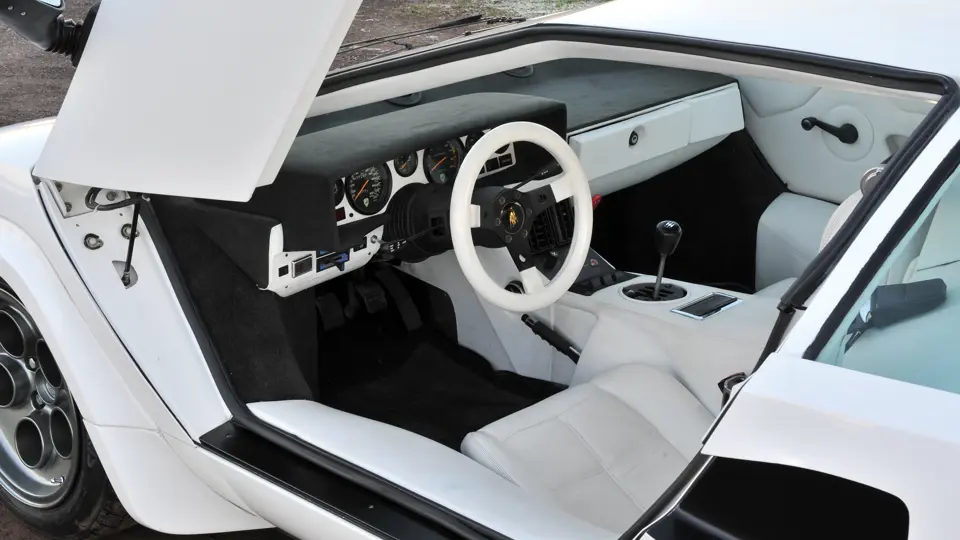

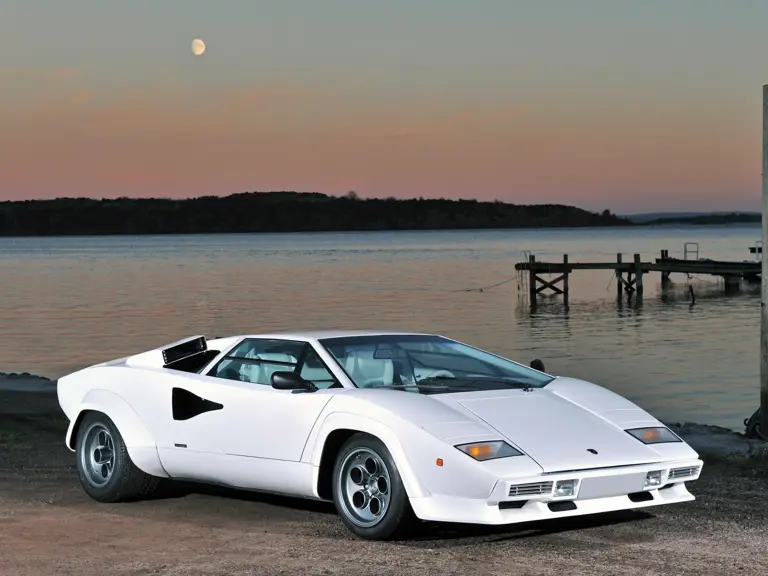
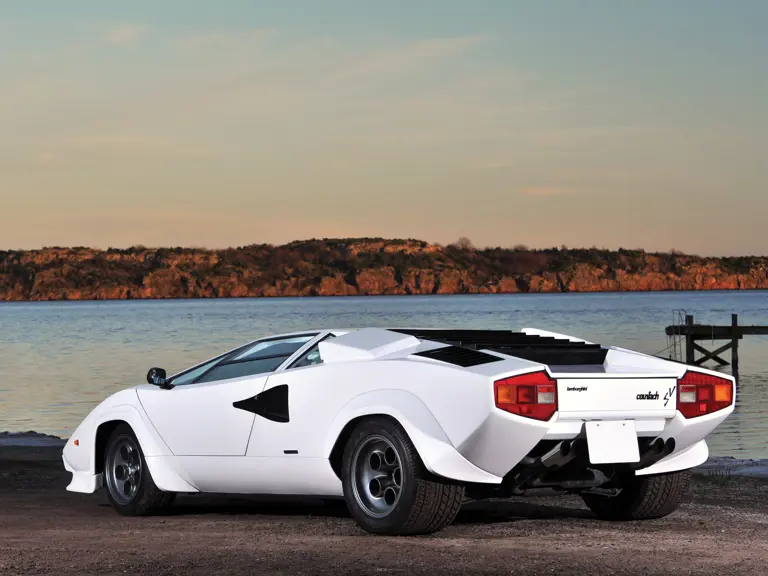

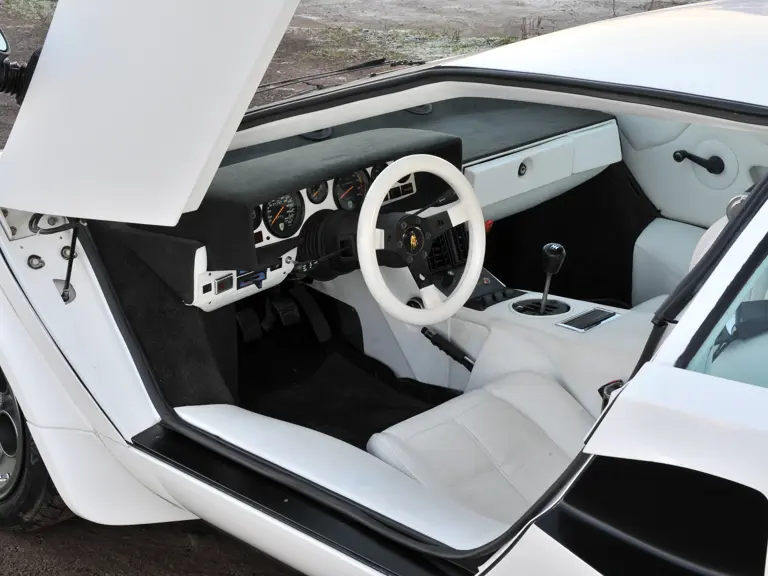
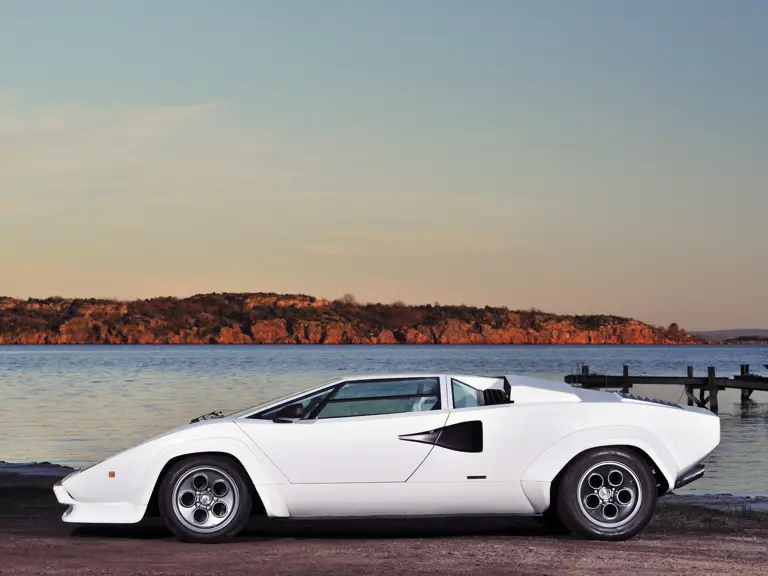

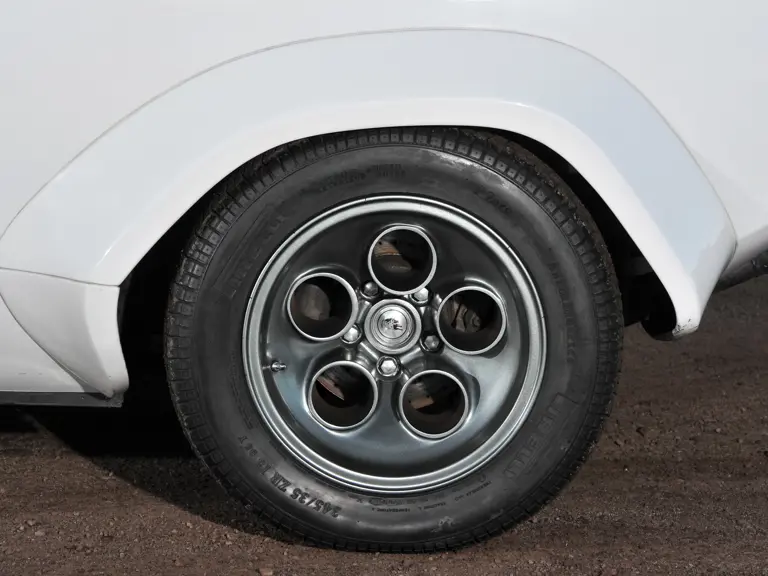










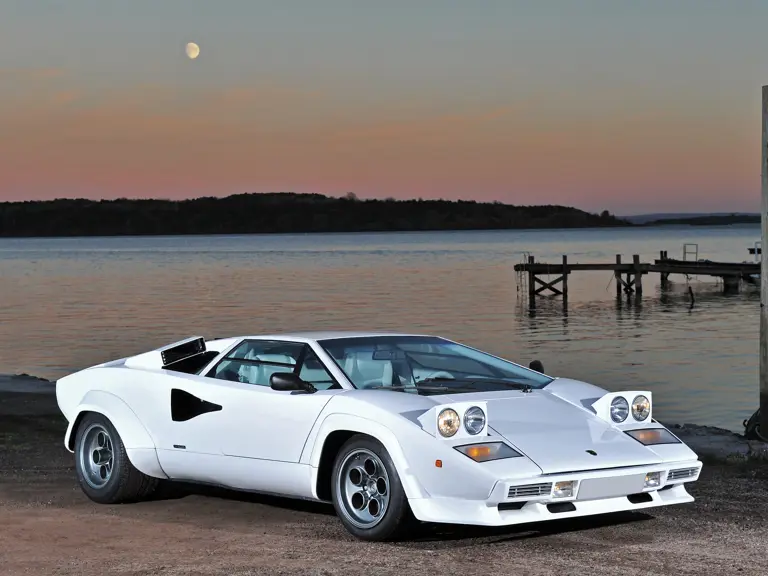
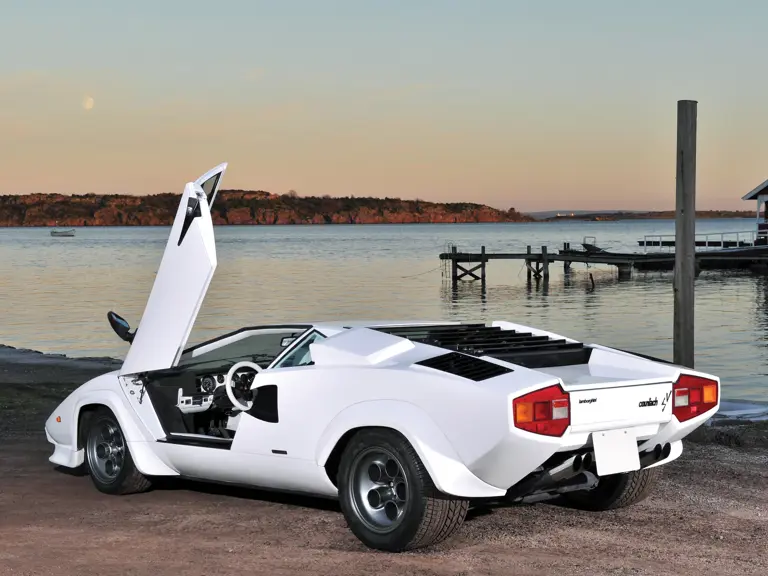
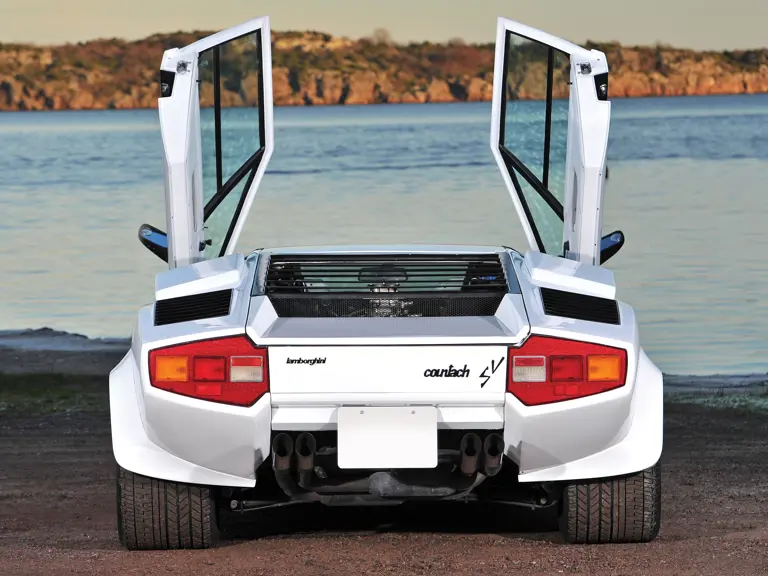

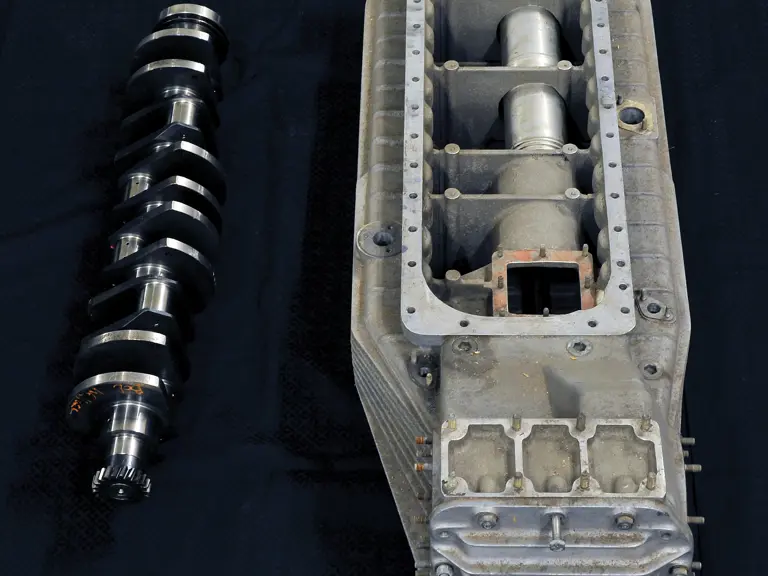
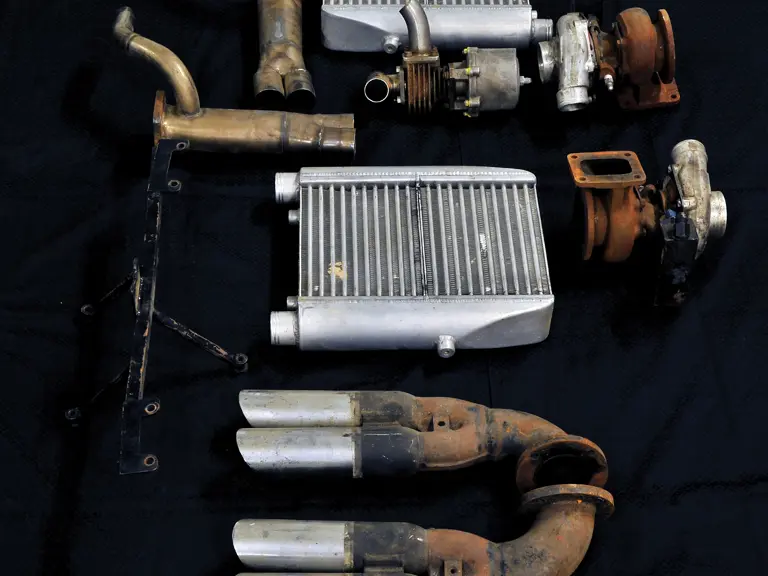
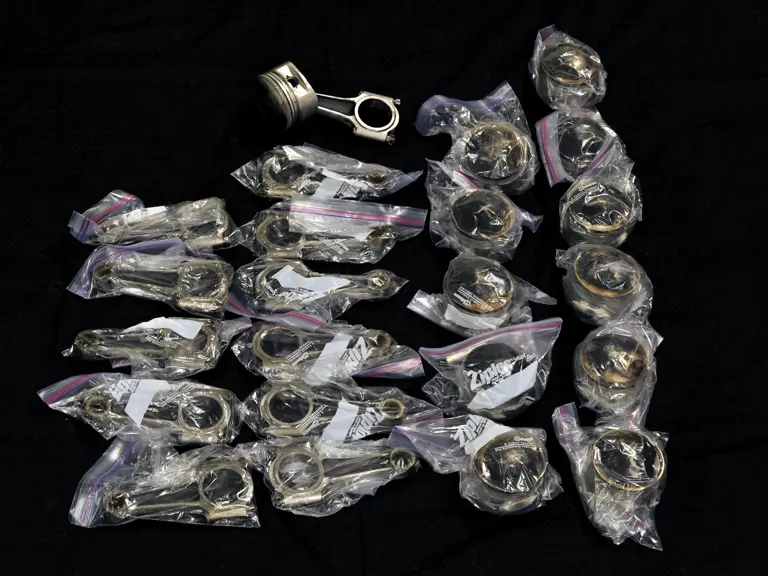
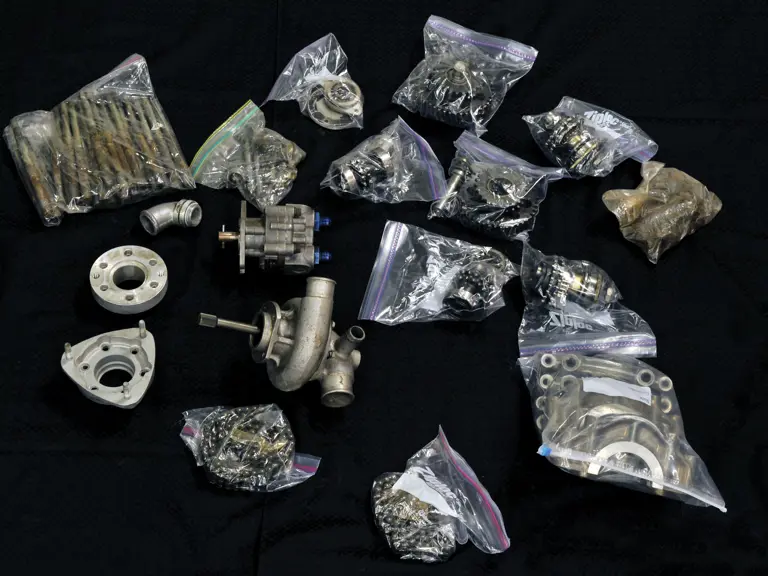
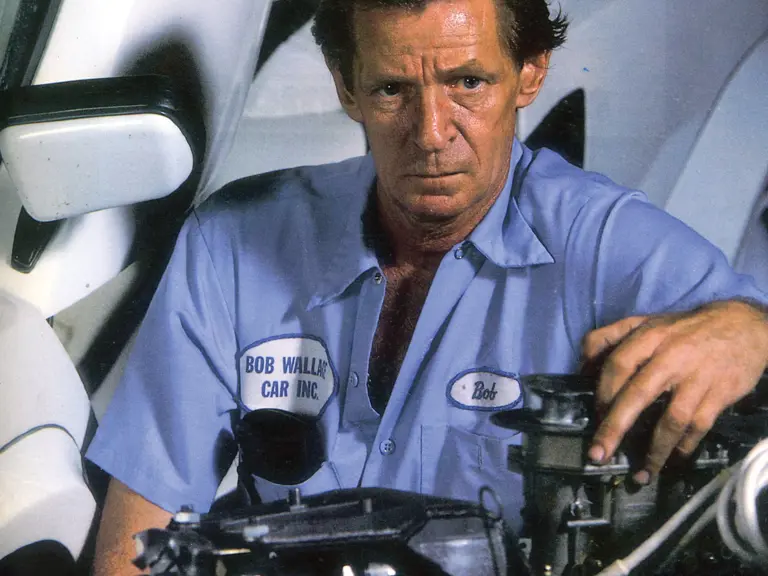
 | Paris, France
| Paris, France

